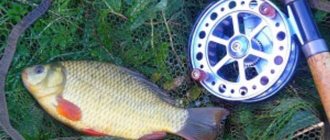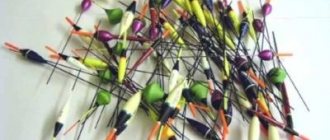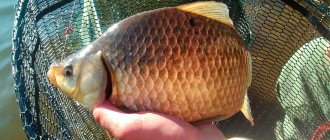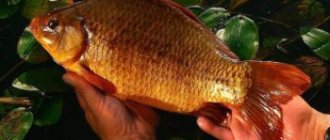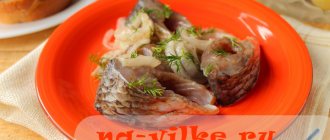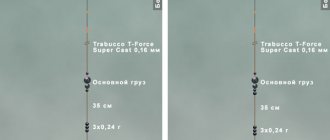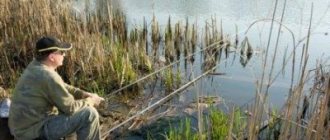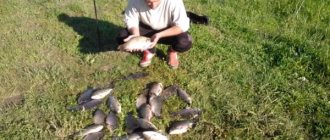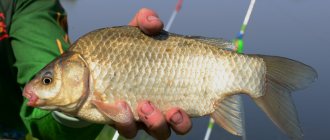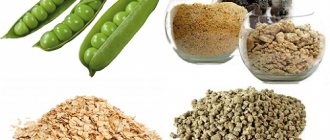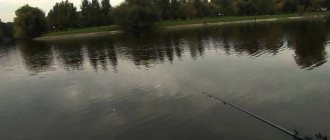Population of silver crucian carp
It should be noted that algae and small invertebrate organisms are digested more quickly by the fish’s intestines, therefore individuals that feed primarily on plankton differ from their relatives in body length. Large crucian carp are distributed mainly in Siberia and the European part of the country. If we are talking about the Far East, then its numbers here are small. It lives in a few swamps, small lakes and slow-flowing rivers.
Goldfish are able to survive in a wide variety of conditions
The silver crucian carp is more adapted to the conditions of the harsh Siberian climate, which successfully reproduces in both small and fairly large reservoirs, no matter how many degrees it is “overboard”.
Silver crucian carp are more hardy, not whimsical and spawn well every year in any fresh and even brackish water. How much silver carp grows in a year depends on the conditions of detention, weather, the breed of males and their productivity. A decrease in the amount of oxygen in water, changes in temperature and acidity of water are not a particular obstacle to their reproduction.
Even if the water temperature drops to zero degrees, crucian carp will be able to survive. In conditions of polluted ponds and wetlands, it is able to survive and reproduce, unlike other types of fish. Increasing in weight up to 200 - 300 grams per year, crucian carp is particularly resilient when there is a lack of air in the water.
The ability of crucian carp to quickly change weight and create various bizarre shapes distinguishes these fish from other freshwater fish. Their bodies are so flexible that aquarium enthusiasts have grown amazing specimens: telescopes, comets, veiltails and other fish species. Japanese and Chinese fish farmers bred a unique breed of goldfish, the ancestors of which were golden carp.
Crucian carp is able to reproduce even in a polluted reservoir and at low temperatures
Fish farmers should know that at the age of 3-4 years, crucian carp are ready to reproduce. If you provide special care - abundant feeding and optimal water temperature, then the fish begin to mature at the age of two. At the same time, if the water temperature drops to a level below average, then sexual maturation of individuals may be delayed for a year.
Home pond and crucian carp: features of breeding and feeding
Crucian carp is one of the most favorite fish among many anglers. In nature, it lives in almost all reservoirs of our country. But it can also be easily grown in a pond at your own summer cottage. This is a very interesting and quite profitable activity. Firstly, you can enjoy fishing in comfortable conditions, and secondly, you can prepare a very tasty dish from your catch.
Breeding crucian carp in a country pond raises a lot of questions for most people. Therefore, let's figure out how to grow these fish in a garden pond, and consider some useful recommendations.
Lucky are those who already have a pond on their summer cottage (a fire pond, a dam on a stream, part of a clean and fenced drainage canal). But if there are no such reservoirs, then you can make your own garden pond.
The optimal size of a country pond is approximately 4x6 m, and its depth varies from 0.8 to 1.5 m. The water in a garden pond will quickly warm up to 25°, which is considered the most suitable temperature for the normal functioning of fish. This small pond is perfect for housing two dozen crucian carp weighing 200-300 g.
Before launching crucian carp, you need to equalize the water temperature between the reservoir from which you are transferring the fish and your pond. Otherwise, a temperature difference of even 2-3° can cause temperature shock and kill the fish.
When growing crucian carp, you need to take into account one interesting nuance - of its two types (gold and silver), the latter is more productive and gains weight much faster. Therefore, it is recommended to breed silver crucian carp.
In nature, male goldfish are very rare. And most of the crucian carp offspring are females. But this fact does not at all slow down the reproduction of this species, because males of similar breeds are successfully used for this - golden crucian carp, carp, carp. For breeding, it is advisable to take females 4-5 years old, with a tall body compressed from the sides - the offspring of such specimens grow much faster, gaining weight well.
The natural diet of crucian carp is quite varied - algae, duckweed, bloodworms, as well as other living creatures that live on the bottom. Therefore, if the pond is properly equipped, there should be plenty of food here. If the reservoir is newly equipped, it does not yet have such a varied menu. Then some difficulties arise with natural nutrition, and the fish have to be fed.
There are no difficulties when feeding crucian carp. For feeding, you can take worms or insect larvae. After all, digging up worms or collecting larvae in a garden plot will not be difficult at all. In addition, you can diversify the fish menu with steamed beans and grains.
To make the feeding process as simple as possible, you can use ready-made food produced for feeding pets. Feed for chickens or pigs is excellent for this. Before adding them to the pond, they need to be soaked with water and made into a thick dough. In addition, special food for crucian carp is also sold. This food is enriched with air so that its grains remain on the surface of the reservoir without clogging the bottom.
Feed flakes to the fish little by little, otherwise they may fall to the bottom and sour there.
The following dishes are best eaten by crucian carp:
- seaweed;
- duckweed;
- steamed beans, grains, cereals;
- worms;
- insect larvae;
- bloodworm.
It is not advisable to feed them bread, because it quickly turns the water sour and spoils.
The main thing is not to overdo it when adding complementary foods. The amount of feed introduced should be a maximum of 5% of the weight of the crucian carp. Calculating this rate is quite simple. If there are 30 fish in a pond, each weighing approximately 200 g, then the total weight of the fish is approximately 6 kg. Accordingly, a single feed rate should not exceed 300 g.
It is best to feed crucian carp 1-2 times a day, at the same time, in the same place in the reservoir. Fish farms install a bell at the crucian carp feeding site, which rings before each feeding. It is advisable to do this in order to form a conditioned reflex in the crucian carp. Thanks to this, the crucian carp finds food faster and assimilates it better. In addition, all the food is eaten without disappearing at the bottom.
The appetite of fish is affected by the weather and the temperature of the water in the reservoir. In early spring, after waking up, crucian carp are fed more nutritiously than in summer. During the hot season, crucian carp does not eat so much, being content with what it independently finds in the garden pond. The colder the water, the more lethargic the fish will be. Therefore, in the fall, after the water temperature drops below 10 degrees, they stop feeding the fish altogether.
When raising crucian carp in an indoor pond that is heated in winter, there is no need to stop feeding.
In order for feeding fish to give the desired result, you must adhere to the following rules:
- The dry mixture cannot just be thrown around the pond. Before feeding, you need to add a little water to the bulk food and knead a thick dough, and then add it to the pond.
- It is always necessary to feed the fish at the same time, in the same place, in order to develop a conditioned reflex.
- If feeding occurs in the evening, the area must be additionally illuminated. The crucian carp will reflexively react to the lighting, time, and place of feeding, which will simplify its catching in the future.
- It is advisable to provide the feeding area with a wide metal tray. It is best to make it from galvanized iron. It must be equipped with a lifting device. Thanks to this, it can be easily immersed in and out of the pond. This tray is needed primarily so that you can monitor how the food is eaten. With its help, you can regulate the amount of food supplied so that excess food does not turn sour or begin to rot. As a result, the water will always be clean.
When creating a home pond, it is necessary to take into account that in the hot summer the water level can drop significantly. Naturally, the amount of fish also needs to be reduced.
The main sign of crowded conditions or lack of oxygen is that the crucian carp rises up and begins to gasp for air.
It is possible to breed crucian carp in a dacha pond only in spring and summer, and in the fall they will have to be caught. During the cold season, the fish burrows into the mud and goes into hibernation. It is not advisable to leave crucian carp until spring, because in a small pond under thick ice there will not be enough oxygen for it.
You can stock the pond again in early spring. Because the earlier you launch the fish, the larger it will be by the end of the season. And to make the ice on the pond melt faster, you can crush it with coal dust, peat chips or ordinary soil.
From the video you will learn how to create your own fish pond:
